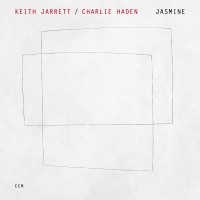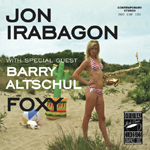Home » Jazz Articles » Live Review » Jazz em Agosto 2010
Jazz em Agosto 2010
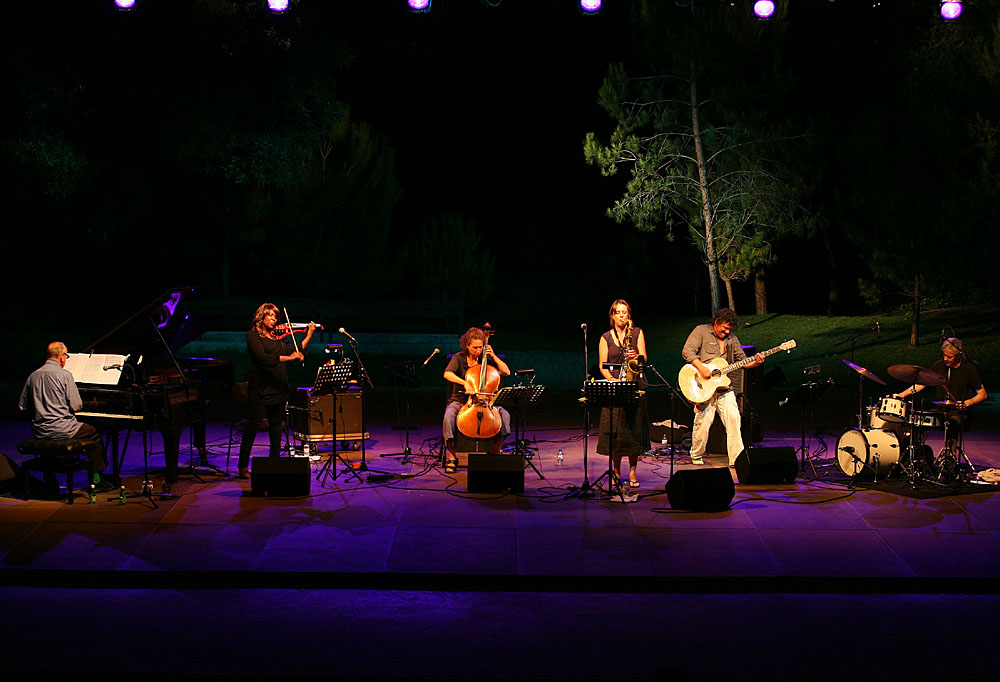
In magnitude if nothing else, Parker's Electro-Acoustic Ensemble was the keynote event of the fest. Key to the sound and structure of the sprawling 19-piece band's sound was the real time processing of the instruments...
Lisbon, Portugal
August 6-15, 2010
If music-making were as simple as putting things in a box, a review of Lisbon's 2010 Jazz em Agosto festival might go something like this: The duo of John Surman and Jack DeJohnette put as much as they could in the box, while Evan Parker's Electro- Acoustic Ensemble realized the box didn't need to be filled all the way. Guus Ganssen and Han Bennink discovered you can put more in if you keep dumping it out again, as did the Luc Ex band El Sol 6, if more methodically than the former. Red Trio found you can fit more in if you pack it just so, whereas the trio of Pat Thomas, Raymond Strid and Clayton Thomas filled the box with smaller boxes and Steamboat Switzerland packed so much in it had to be taped shut. And while Louis Sclavis wrote "Odyssey" on the side of the box, he filled it with pleasantries and forget-me-nots. Frode Gjerstad's Circulasione Totale Orchestra, meanwhile, didn't restrict itself to the box at all.
It's not as easy as that, of course, but making music is a matter off filling space, which is all that's in a box before it's filled. The festival could be looked at more methodically, of course, by pointing out for instance that while the median and mode band sizes were both three, the big band's of Gjerstad and Parker brought the mean average up to 5.4. Here we can see the stronghold staked by the trio over the course of the two long weekends, along with an intimation of the diversity in workforce numbers, even if still it does little to characterize the diversity of actual music produced.
And it was a diverse program to be sure, with a variety of approaches to setting structures for improvisation, or to letting the improvisation flow freely, on display. Not to mention allusions to classical and heavy metal, as well as The Carpenters, an engaging lecture on source materials within the jazz tradition by music scholar Francesco Martinelli and documentary films on Bennink (Hazentijd) and Albert Mangelsdorff (Die Posaune de Jazz).
In magnitude if nothing else, Parker's Electro-Acoustic Ensemble was the keynote event of the fest. Key to the sound and structure of the sprawling 19-piece band's sound was the real time processing of the instruments, especially impressive in the surround-sound of the Fundação Calouste Gulbenkian's open-air theater. Sounds occurring onstage were thrown to the back of the space, setting the audience squarely within the sound field from the opening electronic wash against objects bowed by Paul Lytton and Aleks Kolkowski with Augusti Fernandez playing inside the piano case. That coupled with the flashing white noise video projection created an overall sense of being in the center of an electrical storm—and finding it calmer than would have been anticipated.
This is, or at least for the moment, the avenue by which Parker the improviser has positioned himself as composer. He created the ensemble and environment, and shaped both in real time. Sitting at the front, facing the ensemble, Parker arranged the elements as they were created. When the acoustic instruments came in, it was subtle with a steep ramp, avoiding the "weirdness as intro" cliché, they integrated elements seamlessly (abetted by the integrated circuitry). The band blurred both time and space until trumpeter Peter Evans was given the first unaccompanied solo, using the opportunity for a wonderfully sparse soliloquy, the bell of his horn over the microphone, his breathy exhalations circling back on him. Much of the long performance was built around small groupings and ghostly apparitions, with distinct voices (Ikue Mori, Ned Rothenberg) occasionally rising only slightly above the surface. The piece ended with a beautiful sho passage by Ka Ishikawa set beneath a low-flying plane overhead.
The other big band appearing at the festival was similarly multi-national, combining acoustic and electronic instruments and led by a saxophonist. Gjerstad's 13-member Circulascione Totale Orchestra was like a static storm, the leader walking around the large stage, whispering instructions, bringing in players one by one and staging different little events. Drummer Louis Moholo-Moholo anchored the proceedings with heavy start-and-stop rolls, ornamented by Anders Hana's bowed electric guitar, Kevin Norton's soft marimba and Nick Stephens's slow and solid bass. The band played free, jazz loose grooves with the best parts putting the winds (Gjerstad, tubist Börre Mölstad, saxophonist Sabir Mateen and trumpeter Bobby Bradford) in front of the electric field, especially a Gjerstad/Mateen duo and a pairing of Mölstad and Stephens. Other arrangements seemed more spontaneous, such as Moholo locking in and refusing to bend no matter what happened around him, eventually passing the contagion on to fellow drummer Paal Nilssen-Love, or the whole of the band backing off to give Gjerstad an unaccompanied solo to finish the set and the fest. With all the noise they were capable of making, they were at their best when they weren't, clarinets instead of saxophones, small groups instead of full.
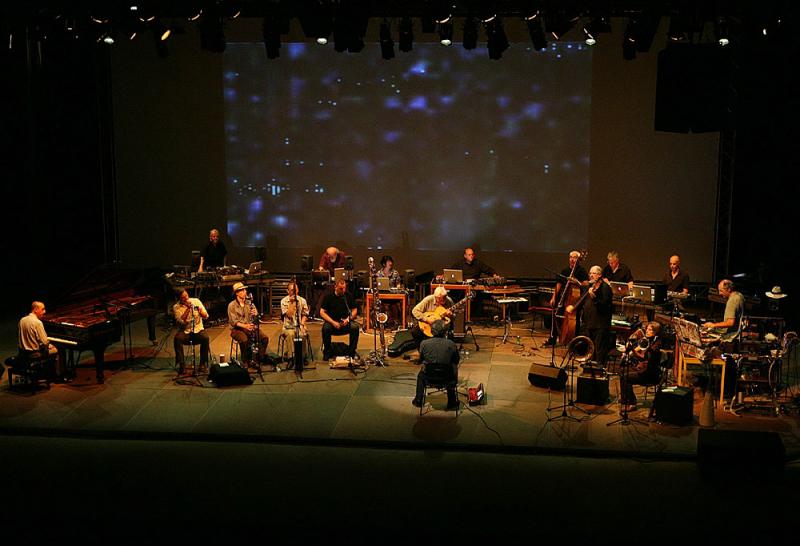
To repurpose a Brad Mehldau title, free improvisation was best exhibited within the art of the trio. The Open Speech Trio opened with Carlos Bechegas clacking scissors, Ulrich Mitzlaff thumping the body of his cello and Miguel Feraso Cabral likewise thumping small objects on his percussion table, all making little, abrupt occurrences. The sound filled out once the instruments took their orthodox angles, cello turned vertical and the flute horizontal, but they preserved their occupation of teeny territories with Bechegas's processed vocals and coffee cup percussion and Cabral's homemade banjo, sounding something like a small sitar. They made a fragile music, each seeming to rely on the other two for stability. Another Portuguese group, the Red Trio, was solid from the first second, seeming to be devotees of the glass-all-the-way-full school, but they worked their way down to an almost single-note groove, then further reduced that to a nicely muted piano solo. To their credit, they didn't confuse fast with loud, and were clever enough to know that using objects to mute or alter the instruments' voices—clothespins on bass strings of a cymbal laid against a drum head or a piano string silenced by the palm of the hand—doesn't replace the need to keep playing as a band. Their use of repetition and expansion made for a sort of free jazz analogue to the totalism school of the 1980s. The three-tet calling itself "Thomas / Strid / Thomas" played soft fragments to start but soon became a drum corps with heavy piano and sticks on the bass and then another very different trio with Pat Thomas turning to his Korg keyboard and handheld electronics. Soothing Sounds for Interstellar Infants. Korg held a sort of squelch box in the piano case and working the strings manually for a mid-tempo askew swing. Their best moments were slow and nervous.
Breaking the improv trio mold imposed here was the powerful amalgam Steamboat Switzerland, who hit like a Deep Purple / Ruins hybrid with an attack so fierce it took a couple minutes before variants could be discerned. (And this was played from scores!) A few minutes later, they started slowing, started stopping, toned down and played a two-note run about 150 times. There just aren't other bands like them. Dominik Blum, playing a Hammond through a Lesley cabinet, had a fantastic way of accenting the clacking of the keys, as if putting rivets through the notes. Marino Pliakis might be best known for playing electric bass guitar in Peter Brötzmann's recent trio. In this group he wasn't heard so much as he made his presence felt. Lucas Niggli's drums were the clearest sound coming from the stage as he played perfectly shaped squares to frame the adrenaline blur. If the trope-metal cookie monster vocals were a bit thin (like Blum was referencing Satanic growls rather than channeling them), the music was thoughtful and energetic at the same time.
The art of the duo was represented by a pair of pairings, both fairly rambunctious and each arriving at mixed results. John Surman and Jack DeJohnette were halfway to a trio with their playing augmented by the sound-processing of Surman's son. They opened with soft percussion and synth, DeJohnette slowly waving a microphone over the cymbals, complementing Surman's ethereal keyboard. When he moved to the drum heads, he revealed synth pads activated from the kit but as they progressed they slowly, almost unnoticeably, gave way to a sax/drum duo, and then started to build up again. DeJohnette looped and reverberated thumb piano, Surman folded in voice samples, electronic echoes still hovering in the air. The whole structure became an unusual double arc, a sort of oval where electronics ebbed as the blowing flowed and then grew and recessed again, and they grew to sound like a duo with noisy neighbors.
If Surman's son was the third member of that duo, a backstage ladder was the third in Janssen and Bennink's duet. Bennink appeared with just a single snare drum (as well as the stage floor, the underside of the piano and the piano bench), while Janssen played quick and clean piano lines, tossing in jazz standards and bits of Bach. It was a one-way street, Janssen setting up pins for Bennink to knock down, appeasing him with swing or initiating themes that Bennink would often ignore or overpower, but Janssen at all times remained firm. The differences between them is what made it work, made clear in the solo section each took. Bennink, of course, is an excellent jazz drummer with a propensity for interjecting and undermining. He pummeled and squawked through "Salt Peanuts" before Janssen, who has worked with the Kronos Quartet and the Schoenberg Ensemble, and has composed for opera, played a soft and elegiac ballad met by the clanging of a ladder Bennink found backstage. One can argue that Bennink is distracting—humor always changes the mood (and is usually used for that purpose)—but the sound of drumsticks rolling across the stage alongside treble piano trills wasn't comic relief, or at least not only that. It sounded quite beautiful, and intentionally so, produced by a guy whose job is knowing how to make sounds.
Sclavis brought his "Lost on the Way" project, a set of music inspired by Homer's Odyssey. The reeds of Matthieu Metzger and the leader were pushed by an unusual back line of drums, solid-body 6-string bass guitar and amplified acoustic guitar. The guitars, largely unadorned by effects, created a sound that felt loud but uncostumed, providing a natural setting for the reeds and creating. They built a full sound of five players, a group sound carved not be clever reimagining of their instruments or electronic manipulation of their output, or for that matter by the compositions, so much as it was their taut musicianship.
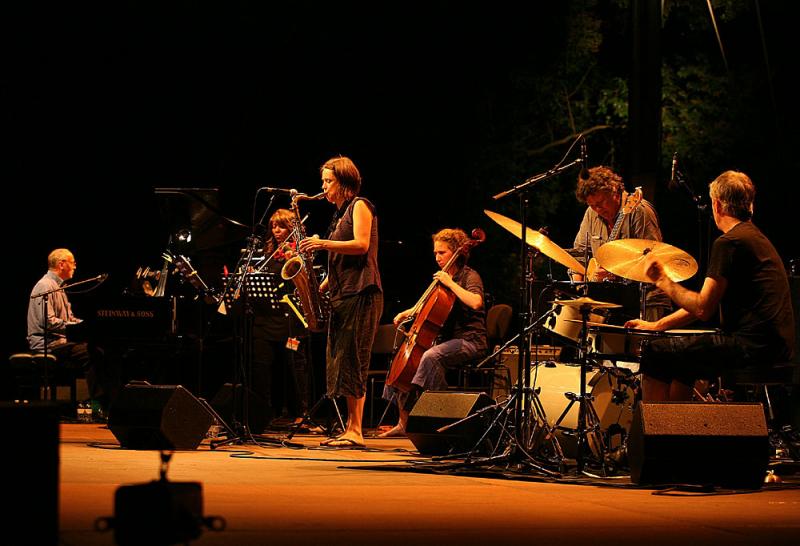
Another peak in the festival was the appearance of Sol 6, a nicely gender-balanced version of Luc Ex's new project (which goes in member count up to Sol 12 at times in case anyone's tallying). As such, it seemed a nice reflection of his former anarcho- outfit The Ex. Three men in the rhythm section, three women playing the melody instruments, at least by traditional divisions. But Sol 6 worked smartly moving in and out of traditions. They worked steadily between open improv and old songs, and if the fluctuation grew predictable the outcomes never were. They played free stomps and mute, metered melodies and rollicking grooves and interspersed within those were songs by Charles Ives, Erik Satie, Bertolt Brecht and Burt Bacharach with viollist Mandy Drummond, saxophonist Ingrid Laubrock, cellist Hannah Marshall and pianist Veryan Weston all contributing vocals. The band was pretty far removed from the punk energy of The Ex, and only so much closer to Luc Ex's band with Weston, 4 Walls. But it still served as a reminder of what Luc contributed to his former band: coupled with the steady precision of Tony Buck's drums, Ex's powerfully strummed acoustic bass guitar was bedrock for this new band as well. The boldness the group showed in its set list in a sense mirrored the boldness of the festival programming, where excellence supercedes concerns about classification.
Photo Credit
Joaquim Mendes
Tags
Jazz em Agosto
Live Reviews
Kurt Gottschalk
John Surman
Jack DeJohnette
evan parker
Han Bennink
Louis Sclavis
frode gjerstad
Francesco Martinelli
Albert Mangelsdorff
Paul Lytton
Peter Evans
Ned Rothenberg
Louis Moholo-Moholo
Sabir Mateen
Bobby Bradford
Paal Nilssen-Love
brad mehldau
Peter Brotzmann
Erik Satie
Burt Bacharach
PREVIOUS / NEXT
Support All About Jazz
 All About Jazz has been a pillar of jazz since 1995, championing it as an art form and, more importantly, supporting the musicians who make it. Our enduring commitment has made "AAJ" one of the most culturally important websites of its kind, read by hundreds of thousands of fans, musicians and industry figures every month.
All About Jazz has been a pillar of jazz since 1995, championing it as an art form and, more importantly, supporting the musicians who make it. Our enduring commitment has made "AAJ" one of the most culturally important websites of its kind, read by hundreds of thousands of fans, musicians and industry figures every month.


